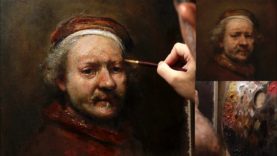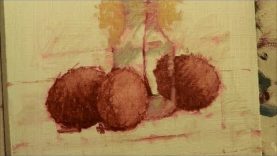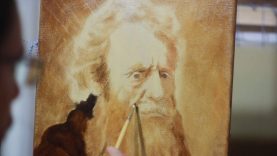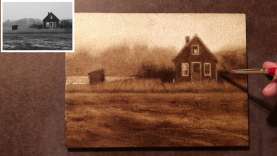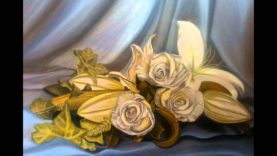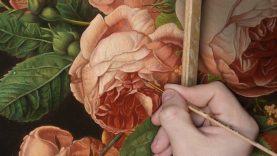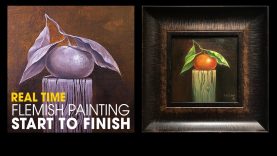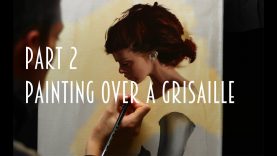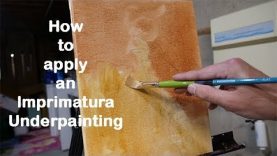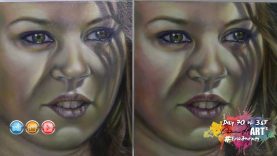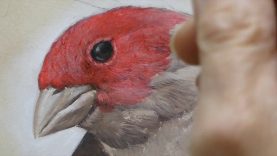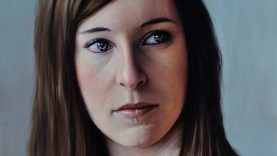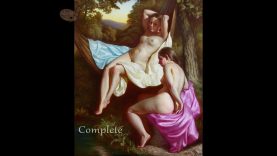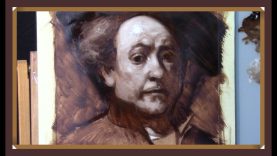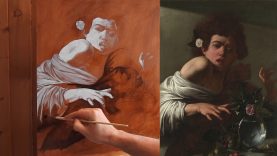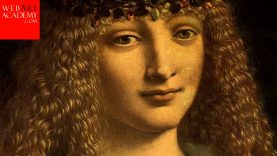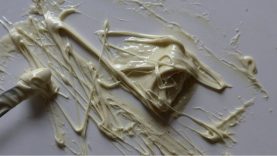1 of 3, Portrait painting tutorial, grisaille technique, glazing
1 of 3 – Portrait painting tutorial showing glazing oil paint on a portrait painting using the grisaille technique. A real time portrait painting demonstration I filmed in 3 parts over roughly an hour, showing glazes of oil paint, scumbling and velaturas applied to a grisaille underpainting. Velaturas are semi – opaque glazes of oil paint, for me made by mixing colours with Titanium White.
This portrait painting is on oil on board that I prepared using a good quality acrylic primer.
I paint portraits and work to commission using this method, and wanted to share the magical transformation an oil painting undergoes when glazing oil paints over a monotone, or grisaille underpainting. Grisaille can be painted in various colours – browns, greens (called verdaccio) or just plain Ivory Black and Titanium White as used here. I will show some films using verdaccio or Burnt Umber and whites in the future.
See the link to my blog for my experience in learning the grisaille oil painting technique, and various other oil painting methods and inspiration.
With this portrait, before I painted the 1st glaze I brushed on a thin layer of medium and then gently rubbed it down with a cloth, a process called ‘oiling out’ the surface. This helps the paint slip around more easily. I have found it’s important not to leave too much medium on the surface, but enough so that you can apply the paint with a light touch. This is something that takes a bit of practice, but everyone’s different so some may like to put more on, some less or not at all. For me its a lot more comfortable to paint oils in this way.
Colours I’m using are Alizarin Crimson, Cadmium red and orange, Indian Yellow, Sap Green, Ultramarine blue, Raw Sienna, Titanium White. I generally use hog brushes here with some finer ones later on. I would probably paint anywhere between 5 and 10 further glazes over the top of the first glaze, once its dry.
For brevity and clarity I am only filming painting the first glaze, as the process is essentially the same; when the paint is dry, oil out the surface and add more glazes. Let dry and repeat! But I will make some short abbreviated films of each glaze in succession with later portrait paintings.



